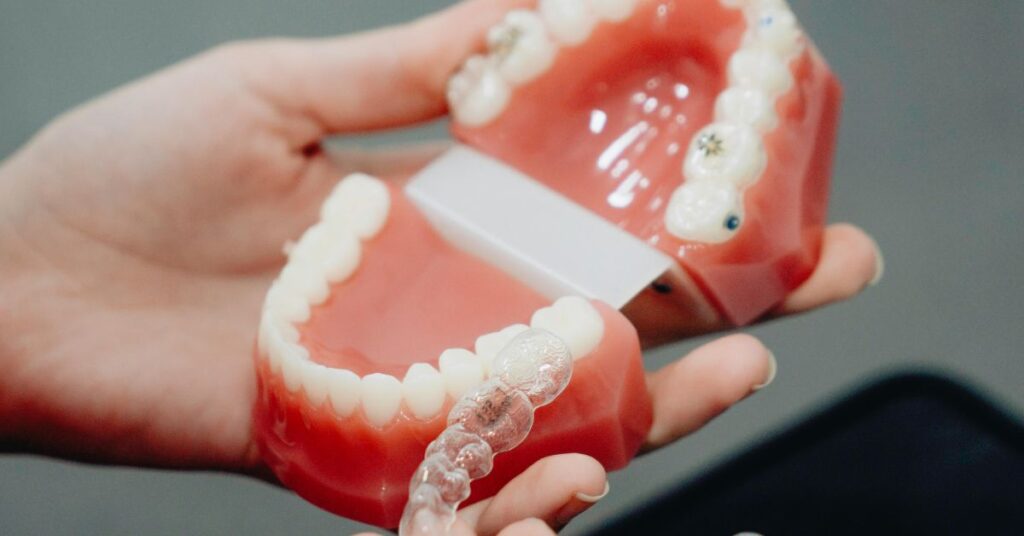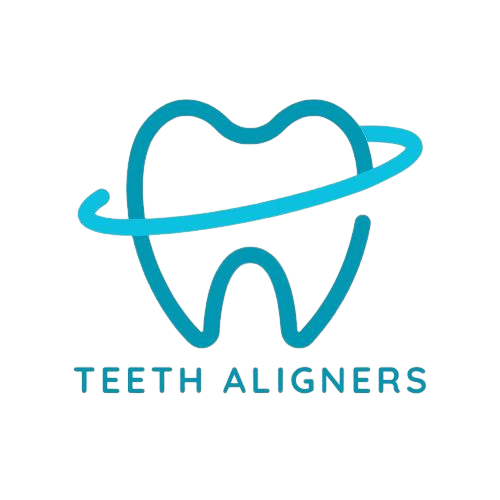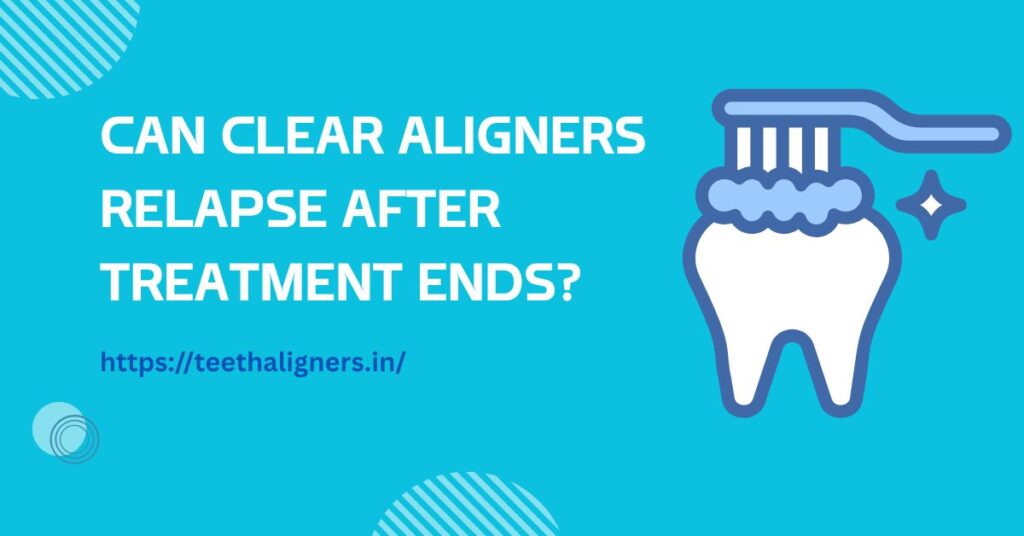When patients complete their clear aligners treatment, it often feels like the finish line of a long journey. Smiles look straighter, confidence rises, and the daily effort of wearing trays finally pays off.
But for many people, a lingering worry remains,can teeth shift back to their old positions once treatment ends? This concern, known as relapse, is a natural possibility that can happen after any orthodontic procedure.
Relapse does not mean treatment failed; it simply reflects how teeth and their supporting structures behave over time. Understanding why relapse occurs and how to manage it helps patients protect their investment in a new smile.
Table of Contents
ToggleWhat Does Relapse Mean After Orthodontic Treatment?
Relapse is the movement of teeth back toward their original positions after orthodontic correction. Teeth are held in place by the bone, gums, and connective tissues that surround them.
These tissues have a memory of the tooth’s earlier position. Just as a stretched rubber band tends to snap back when released, teeth also attempt to return to where they once were.
With Invisible smile aligners, patients can enjoy discreet correction, but long-term stability still requires consistent retention. This natural tendency explains why orthodontic treatment does not truly end the day the last tray is worn.
Without continued support, teeth can shift, sometimes slightly and sometimes in more noticeable ways. Retainers and regular checkups are essential tools that help keep the final results intact.
Why Do Teeth Relapse After Clear Aligner Treatment?
Even with modern advances in orthodontics, including Clear Aligners, teeth are not permanently fixed in one place.
They sit in a dynamic system of bone and soft tissue that constantly adapts to forces from chewing, speaking, and daily habits. Over time, several factors can encourage relapse.
Natural Shifting of Teeth Over Time
As people age, subtle changes occur in the mouth. The bite may tighten, teeth can crowd, and small shifts may take place. This process happens even to individuals who have never had orthodontic treatment.
For someone who just completed aligner therapy, these natural forces may contribute to teeth drifting slightly if no retainers are used.
Skipping Retainers
Perhaps the most common reason for relapse is neglecting retainers. Retainers act like a seatbelt for the smile, holding teeth in their corrected positions while the supporting tissues stabilize.
Without them, teeth can quickly start to move. Even a few weeks without wearing a retainer can undo months of progress. Patients who assume their teeth will remain fixed without this step are often surprised at how quickly relapse can occur.
Gum and Bone Support Changes
Healthy gum tissue and bone are essential for stable teeth. If gum disease develops, the support around the teeth weakens, making them more likely to shift.
Similarly, changes in bone density due to age or health conditions may affect stability. These biological factors play a role in why some patients experience relapse even with good habits.
Habits That Push Teeth Out of Place
Daily behaviors can also encourage relapse. Teeth grinding at night places constant pressure on certain teeth, slowly pushing them out of alignment. Nail biting or chewing on hard objects does the same.
Tongue thrusting, where the tongue presses against the front teeth during swallowing, is another common cause. These small actions add up, creating gradual but noticeable shifts.
The Role of Retainers in Preventing Relapse
Retainers are the most effective defense against relapse. They maintain the new alignment while the tissues around the teeth adapt to their new positions. There are two main types of retainers: removable and fixed.
Removable retainers can be clear trays or traditional wire-and-plastic designs. They are worn most of the day right after treatment, then gradually reduced to nighttime use.
Fixed retainers, on the other hand, are thin wires bonded to the back of the teeth, usually on the lower front teeth. They remain in place for years and provide constant support.
Both types work well, and the choice depends on the patient’s needs and dentist’s advice. What matters most is wearing them consistently. Retainers should be treated as a lifelong commitment, not a short-term step.

How Common Is Relapse After Clear Aligners?
Relapse is fairly common, especially if patients stop wearing retainers. Studies suggest that without retainers, up to half of orthodontic patients experience some level of relapse within a decade.
For many, the change is minor and only visible to a dentist. For others, it can mean noticeable crowding or gaps returning.Relapse is not unique to aligner treatment.
People who wore braces also face the same risks. The difference lies in follow-through. Patients who take their aftercare seriously maintain their results, while those who neglect retainers often see unwanted changes.
Examples of Relapse Cases
Consider two different patients. The first continues to wear retainers as recommended, keeping up with dental checkups and caring for their oral health.
Years later, their smile remains almost identical to how it looked at the end of treatment. The second patient, however, sets aside their retainer after only a few months.
Within a year, their lower teeth start to overlap again, and small gaps reappear. These contrasting outcomes highlight how much personal responsibility matters in maintaining orthodontic success.
Can You Fix Relapse After Treatment?
The good news is relapse can almost always be corrected. The approach depends on the degree of shifting.For minor relapse, wearing retainers again may guide teeth back into position.
Some dentists offer refinement trays that work like mini-aligners to fix small movements. For moderate or major relapse, a second round of aligners or even braces may be necessary to restore the original results.
The important thing to remember is that relapse does not erase all progress. With timely professional care, smiles can be corrected again.
Steps to Prevent Relapse
Preventing relapse is simpler than treating it later. Wearing retainers as directed is the first step. Replacing broken or lost retainers immediately is equally important. Patients should also visit their dentist regularly to monitor stability and address any small shifts early.
Daily habits also matter. Avoiding nail biting or chewing on objects helps prevent unwanted pressure. Addressing gum problems promptly maintains strong support. Patients who grind their teeth may need a night guard to protect both their teeth and their alignment.
These habits are easy to adopt, but ignoring them can lead to gradual relapse that requires more treatment later.
Relapse Concerns in Areas Like South Delhi
In places such as south delhi, more people are turning to aligner treatment because of its comfort and discreet design. Professionals, students, and young adults especially value the convenience of removable trays. Yet many are unaware of how important aftercare is.
Patients often celebrate the end of treatment without realizing that relapse can happen quickly if retainers are not part of their routine.Dentists in high-demand areas report seeing patients return with crowding or spacing issues within just a year or two.
These cases underline the importance of combining aligner treatment with long-term education about relapse prevention. Clinics that emphasize aftercare alongside treatment provide their patients with stronger, lasting results.
Lifestyle and Daily Habits That Impact Relapse
Daily life choices play a significant role in whether relapse happens. Teeth grinding during sleep, also called bruxism, can slowly shift teeth out of place. This is especially true without the protection of a night guard.
Tongue posture is another factor; pressing the tongue against the teeth when speaking or swallowing gradually creates pressure that encourages movement.
Even small habits such as biting nails, chewing pens, or using teeth to open packages contribute over time. While these actions may seem harmless, they interfere with the stability created by orthodontic treatment.
Diet also influences relapse indirectly. Hard or sticky foods can damage retainers, making them less effective. A poorly fitting retainer cannot hold teeth in place, which gives them the freedom to drift. Self-discipline in wearing and maintaining retainers is the key to avoiding these setbacks.
The Role of Dentists in Long-Term Smile Stability
Dentists are central to keeping results stable after treatment. They do more than just provide retainers. Regular checkups allow them to spot early signs of relapse, check gum and bone health, and recommend adjustments if needed.
For patients at higher risk of relapse, dentists may suggest permanent fixed retainers. These small wires are discreet, comfortable, and highly effective at preventing unwanted shifts. Dentists can also provide night guards for those who grind their teeth, adding another layer of protection.
Partnering with a trusted clinic makes a big difference. Clinics such as our clinic not only provide treatment but also guide patients through the years that follow. This support ensures that smiles remain as beautiful as the day treatment ended.
Conclusion
Relapse after aligner treatment is a real possibility, but it is not something to fear. Teeth naturally want to shift back, but with the right care, their new positions can be preserved.
Wearing retainers consistently, breaking harmful habits, and visiting the dentist regularly all help keep smiles stable.For patients who notice their teeth beginning to move, early action is key.
A dentist can suggest refinements or other treatments before the problem becomes significant. Long-term success comes from a mix of patient discipline and professional guidance.
For those considering aligners or who have recently completed treatment, working with experienced professionals ensures both results and maintenance.
Clinics like Teeth Aligners in India combine treatment with long-term support, helping patients enjoy their straight, confident smiles for years to come.

